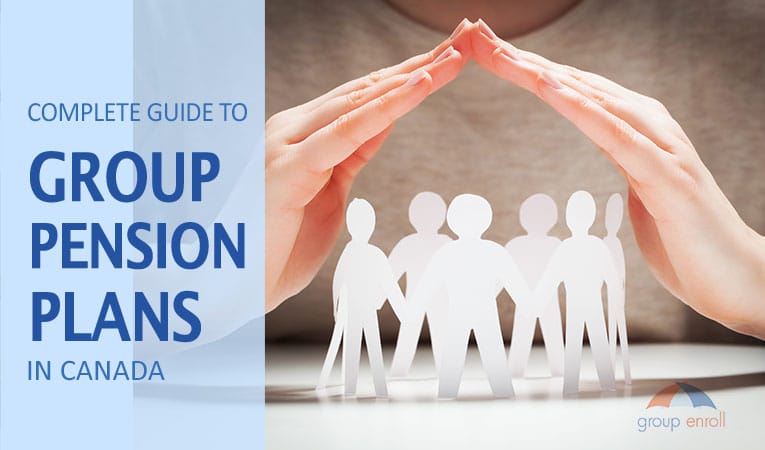Tax season is upon us, and it’s hardly an event that people anticipate with pleasure. Despite the headache, filing taxes is a straightforward process, and you can do it on your own. If you are self-employed, there are specific rules, expenses, and deductions that apply to you per the Income Tax Act (ITA). Knowing what expenses and deductions you can include on your taxes can save you money and problems down the line.
Tax deductions on expenses during the year help decrease your annual expenditures, and there are several purchases that you can write off. However, you cannot claim everything you spend as a deduction, so it’s essential to know what expenses are eligible.
Always make sure that the expenses you claim are for business expenditures only and don’t include personal items and services. Ultimately, the Canada Revenue Agency makes the final decision when determining whether your application meets approval guidelines.
The golden rule to follow is that expenses must be necessary to earn business income, and they must be reasonable. Always aim for accuracy and gather your receipts and expense information before you start.
Before filing, check our self-employed tax-deductible expenses list. It contains all you need to know when it comes to write-offs for the self-employed in Canada.
Table of Contents
How Much Do I Need to Set Aside for Taxes Every Year?
You cannot know the exact dollar amount of taxes that you will pay every year, even if you are using software to track expenses. Despite this, you can still make a rough estimate of your payments and the percentage you should set aside.
To stay on the safe side, try to leave between 30-35% of your income for tax expenditures every year. This income will go to the following:
- Goods and Services Tax / Harmonized Sales Tax (GST/HST)
- Federal Income Tax
- Provincial Income Tax
- Canadian Pension Plan
Remember that you must disclose all of your income on your tax returns. Failure to do so can get you into legal trouble.
What Can I Claim on My Taxes if I am Self-Employed in Canada?
Everything that you pay for starting and running your business is a business expense. Since you are self-employed, you can claim these expenses as deductions on your tax return.
The following is a list of the most common self-employment tax deductions:
- Start-up costs
- Insurance
- Delivery expenses
- Motor vehicle expenses
- Legal and accounting fees
- Travel costs
- Licenses and business subscriptions
- Office and general supplies
- Bank fees and interest charges
- Communications
- Rent and utilities
- Wages
- Business use-of-home expense
- Advertising
Make sure that you have a thorough understanding of what each one entails. For example, communications expenses, such as a phone or internet connection, must only be for business use.
Start-up Costs
When you first become self-employed, you can deduct the expenses that you paid to establish your business. Bear in mind that these payments must occur within the fiscal year of filing.
Insurance
You can claim commercial insurance that you use for any space, equipment or machines you use for your business. If you use a vehicle for professional purposes, you cannot claim it as insurance but as a motor vehicle expense.
Delivery Expenses
You can deduct your costs for the delivery or freight services you use for your business. Both payments and deliveries/freight services must be incurred within the current fiscal year.
Motor Vehicle Expenses
If you rely heavily on your motor vehicle for your business, you can deduct motor vehicle expenses. You can find it in the “Chart A – Motor Vehicle Expenses” section of your form. You can calculate deductions on a trip-by-trip basis if you use the vehicle for some business purposes.
Legal and Accounting Fees
As part of your business expenditures, all legal fees that you paid for your business for the fiscal year qualify for deductions. Expenses also include accounting services that you paid for and even software.
Travel Costs
For some Canadians, travel is a part of their business, and they do it extensively. Since travel costs accumulate in the long run, it may be a relief to know that you can deduct these costs from your taxes. In addition to airfare, don’t forget to add hotel costs, transportation, and baggage fees.
Licenses and Business Subscriptions
Some self-employed Canadians use subscription services for some parts of their business. That may include training materials and licenses that keep operations running smoothly.
Office and General Supplies
The supplies you use for your everyday business operations are all deductible. Make sure you save the receipts for all your purchases so that you can claim them later.
Bank Fees and Interest Charges
If you pay bank fees and charges that relate to your business, they qualify as deductibles. Fees and interest charges also apply if you’ve taken a loan. Fees for cashing cheques are part of deductions as well.
Communications
The internet and phone subscriptions that you use for professional purposes count as business expenditures. Like vehicles, if you apply these for only part of your professional activities, you can factor the cost on a per-use basis and add it up to come up with an amount.
Rent and Utilities
If you work from an office that you rent, you can add your rent cost as an expense on your return. All utility bills that come from the business also count, like electricity or heating costs. Keep in mind that the rent that you pay for a home office is different from an external office.
Wages
Even if you are self-employed, you may have employees or hire contractors to perform some of your work. You can claim the expenses you pay for wages when you file your returns. Ensure that you provide them with the correct paperwork once you do so, as you cannot claim wage payments that you don’t document.
Business Use-of-Home Expense
Many self-employed Canadians prefer to use their home as a business office. You can count your home office as a business expense, but there are requirements to keep in mind.
First, you have to determine the size of your working space relative to your home. For example, if your office space constitutes 20% of your home’s total area, you can claim 20% of your home expenses as business expenditures.
Advertising
Whether it’s for a single person or a large corporation, every business needs to advertise for people to know it exists. Luckily, advertising expenses are tax-deductible. They also include online advertising platforms such as Facebook or Instagram.
Expenses with Specific Rules
Some of the expenses that you have as a self-employed Canadian have rules for how much you can claim on deductions. These include:
- Food, beverages, entertainment – You can claim up to 50% deductions on the meal expenses you pay for the fiscal year. Like food and drink, don’t claim more than 50% on entertainment costs for the year.
- Home office – The expenses you claim on your home office are specific, and you must know what you can add. For example, home renovations or improvement projects don’t count towards your tax deductions.
- Home office equipment – Your home office likely contains equipment that you use daily. Depending on the degree of use, you can claim from 1% up to the total cost of the material.
6 Best Ways on How to Save Tax in Canada
This article will guide Canadians on how to save on taxes in Canada, and these are just a few of the many strategies out there.
Expenses That Self-Employed Business Owners Often Miss
You could potentially save hundreds of dollars on costs that you didn’t know that you can deduct. There are many to keep in mind before you file your taxes. Some examples include:
- Parking fees
- Cleaning services for your home office
- Interest on car payments
- Bad debts and costs of recovering accounts receivables
- Private health insurance plan premiums for your employees or yourself
If you’re looking for affordable group healthcare insurance plans for you or your employees, fill out our quote request form. We strive to make the process as fast, simple, and pleasant as possible by offering you quotes from top Canadian providers with one simple form. We can help you find group life insurance, retirement savings, extended health care, and dental insurance plans at affordable prices.
Record Keeping and Expense Tracking
As you can see from the list of self-employed tax deductions in Canada, there are plenty of expenses that you can write off as deductions. However, even if your costs are all correct, your tax return may trigger an audit. It is in these scenarios where record-keeping and expense tracking come in.
Record keeping makes sense for several reasons. Primarily, you monitor the flow of money that comes in and goes out, and you also keep auditors at bay. You must be able to verify every expense that you file on your return. Failure to do so can mean legal trouble and a penalty or fine.
You can keep a record of your expenses and track them through the use of bookkeeping software. Nowadays, there are many options for business owners and those who are self-employed. Not only are they user-friendly, but they are also cost-efficient.
You can use record-keeping software that exports your information to tax software or programs that you use to file, as well. One example of this is QuickBooks that you can use to upload your expenses to Turbo Tax.
Although you may not need software to track your expenses, always ensure that you maintain records of every receipt and payment.
The Canadian Pension Plan
If you are a Canadian between the ages of 18 – 70 and make more than $3,500 annually, you must contribute to the Canadian Pension Plan. The CPP replaces some of your income once you retire, and is a good investment for you and fellow citizens. Every year, the rate adjusts depending on the growth of the Canadian economy and employee wages.
Both self-employed and employed citizens must contribute towards the CPP, but in different ways. People who are employed usually contribute a percentage of their wages to the pension, while their employer matches that contribution. However, self-employed Canadians must pay both of these shares.
The rate changes depending on the year and adjusts according to your income. Since it is subject to change, always check to see the current year’s rate before making the payment. For example, in 2019, the percentage was 5.1%, and as of 2020, it was at 5.25%.
Wrapping Up Tax Deductions
When you maintain a consistent record of your accounts payable and receivable, it is easier to manage your tax return. Whether you choose to file your taxes manually or use tax filing software, always make sure that what you claim matches the receipts and statements that you have.
Keep all records of your business expenditures for six years. In case of a tax audit, the Canada Revenue Agency may ask for receipts that go that far back. Maintaining these records helps you avoid a fine if information in your filing form requires a second look.
When you have the right information and prepare yourself for tax season throughout the business year, filing your taxes becomes a breeze. Keep track of your expenses, monitor your costs, and record all income that you receive from others for your services.








